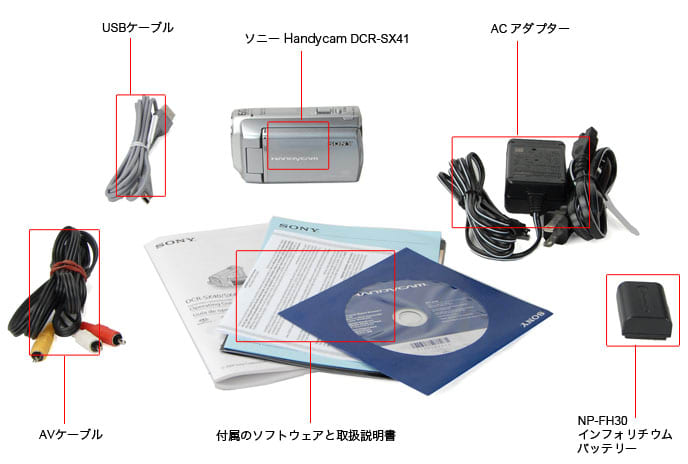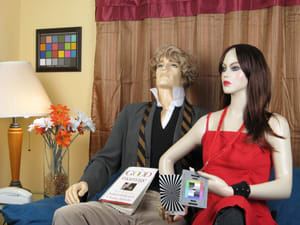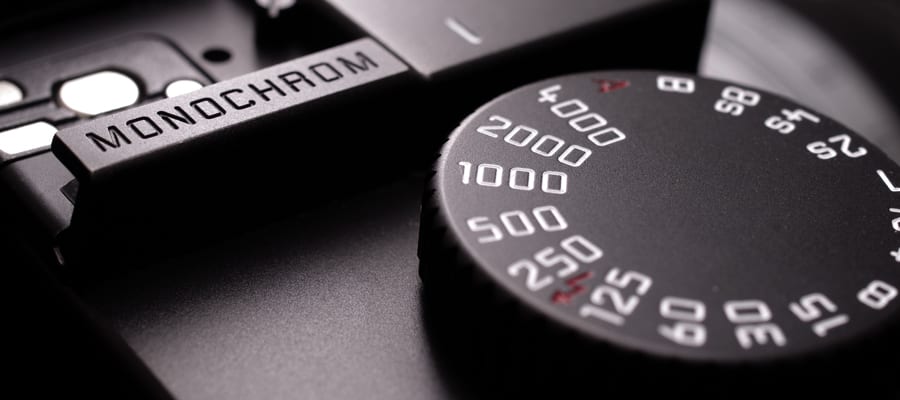Pros
Cons
Though all digital camera sensors capture black and white photos by default, nearly every camera also uses a special chromatic filter to figure out what color each pixel should be. The Leica Monochrom has no color filter; its full-frame sensor is designed from the ground up to capture just black-and-white images at the greatest resolution possible. With a rangefinder for framing, full metal body, and mostly manual controls, the Monochrom is as close as you can get to shooting with black-and-white film in a digital body.
While the nostalgia is nice, the Leica M Monochrom seems caught between two worlds; the camera replicates the visceral feeling of manually shooting film, but it fails to take advantage of the convenience and expedience of modern digital cameras.
{{ photo_gallery "tour" }}
Design & Handling
The Monochrom will take some great photos, but not until you learn it inside and out.
Shooting with a Leica is unlike shooting with any other digital camera. The most obvious difference between the M system and other digital cameras is its use of a rangefinder system. The combination of an optical finder with rangefinder window gives the M series its name, for the German word messsucher. When looking through the viewfinder you'll see two offset images; when you turn the focus dial the images line up, ensuring pinpoint focus. The truly optical finder is offset from your lens, so your framing isn't exactly accurate and capturing sharp moving subjects with a rangefinder requires quite a bit of guesswork and experience. It's a challenging way of shooting that forces you to really understand your camera, your subject, and your settings.

The Monochrom itself is very sturdy, with a magnesium alloy body capped on the top and bottom with brass plates. The body is wrapped in a synthetic leather that doesn't provide a great deal of grip, with no ridges or indentations to accomodate the hand. It's a handsome design that fits right alongside previous M cameras, though without grip it feels like it could slip right out of your hand. It's also something true of most Leica cameras, but having to remove the entire bottom plate of the camera to get at the battery or memory card is tiresome. The whole package is also quite heavy at 21 ounces, but that weight is evenly distributed, which gives it a nice balance when focusing manually.
Leica's experience in producing top-rate film cameras shines through when shooting with the M Monochrom. The power switch, shutter speed dial, frame selection lever, and the shutter release are all expertly crafted and made of metal—not the chintzy plastic that many cameras opt for. The viewfinder is large and bright, with adjustable frame guidelines and a small text readout that displays information that changes depending on how you're shooting. You have to take your eyes off the finder to review your image and check exposure, but once you get used to the system it's easy to simply shoot as you would with any film rangefinder.
Unfortunately, Leica's inexperience in (or simply distaste for) designing digital interfaces also shines through. The menu system is poor compared to most other cameras, with few options and little customization. Perhaps more seriously, playback functionality is hampered considerably by the low resolution rear screen. We enjoyed the histogram and exposure warnings, but when you zoom in to full magnification to check focus the images invariably look soft, even when the actual shots are razor sharp. Given that one of the main advantages of shooting digital is instant image review, it's jarring to be unable to reliably check focus. Honestly the only way we got over this was to simply trust our instincts that focus was indeed correct, but that's a dangerous proposition—especially if you plan to shoot street scenes with shallow depth of field.
{{ photo_gallery "product-photos" }}
Black-and-White Shooting
I guess this is where we go back to Kansas?
Shooting with the Monochrom will require you to rewire your brain. Subject choice is a whole new ballgame, as black-and-white shooting often accentuates repeating patterns, texture, contrast, and shape, while saturation and vibrancy are less significant; a beautiful blue sky behind a bright, red building looks great in color, but it might be boring in black-and-white. When shooting black-and-white it also pays to keep in mind the extra post-processing latitude you'll have; often images come from the Monochrom with a flat, gray look, but come to life with just a few adjustments in Photoshop.
The engine that drives the Monochrom is its 18-megapixel monochromatic full-frame CCD. The sensor is purportedly designed by Kodak, likely from the same bones that were used in the Leica M9. Like most digital cameras, the Leica M9 uses a Bayer color filter array placed over the image sensor, such that each pixel is only sensitive to red, green, or blue light wavelengths. The camera then interpolates all this data, combining the three color channels to recreate how the scene looked to your eyes. The Monochrom goes without this filter, though it does appear to still have a filter that limits the sensitivity to extreme wavelengths, like infrared and UV light.
As a result, the Monochrom has a couple of advantages along with some downsides. Besides the obvious inability to capture color images, the Monochrom presents users with just the global RAW data. With conventional digital cameras, users can create a black-and-white image by desaturating the red, green, and blue channels. This allows you to make easy edits to just one channel, independent of the others. Even though your image is still black and white, you can lighten or darken red objects rather than green, and so on. The M Monochrom doesn't offer this option since it doesn't capture color information about your scene. The advantage is that every pixel is simply a value from black to white, preserving maximum resolution with no detail loss due to interpolation.
Image Quality
The Monochrom is a generally solid performer, with images that really shine with a little TLC.
We paired the Leica M Monochrom with the 35mm f/2—a lens that’s ideal for street photography and that complements the resolving power of the sensor very well. While we don't have an M9 or M Type 240 to compare the Monochrom to, our lab numbers (and our sample photos) indicate a potent combination of lens and sensor that’s sharp corner-to-corner when stopped down to f/2.8 and beyond.
On paper, the 18-megapixel full-frame CCD sensor of the Monochrom seems a bit outdated, but it actually displays fairly good dynamic range characteristics. Its ISO range stretches from 320 to 10000, with a pull 160 ISO setting as well. At base ISO we found the camera had about 13 stops of dynamic range, though there is considerable noise visible in the scene already. The pull 160 ISO setting saves some highlights, but you lose about a half stop of range by using it.

Straight out of the camera, the Monochrom's shots lack contrast, as the camera uses a flat gamma curve by default. You can alter images from there in the camera using some built-in tonal curves, or you can simply do this in software later. The Monochrom comes with a free downloadable copy of Adobe Lightroom 4, which handles the native .DNG RAW format very well—as well as the Silver Efex Pro 2 plugin. In Lightroom, we found dropping the shadows and enhancing contrast drastically improved most of our images. We found a small dose of Lightroom's "Clarity" slider particularly useful, as it enhances midtones and local contrast, improving sharpness without enhancing noise in flat areas such as shadows and sky.
This is still an aging CCD sensor, however, and we found noise levels were greater than other full-frame cameras, especially at high ISO speeds. Even at ISO 160 noise already tops 1.24%, crossing the 2% threshold by ISO 1600. Beyond that noise begins to rise precipitously, hitting 3% at ISO 3200, 4.5% at ISO 6400, and 4.72% at the max ISO of 10,000. We had hoped that the lack of a Bayer filter would offer a more "filmic" look to the noise, but in reality that's not the case. Instead, noise has a very sharp, pointillist look that is easily exaggerated when trying to increase contrast or sharpness in post-production.
Conclusion
An exercise in the benefit of doing it all yourself
The Leica M Monochrom is one of the more fascinating cameras we've ever reviewed. It has an impressively well-built body that is designed for a very small niche of shooters who want a camera that does one thing extremely well at the expense of nearly everything else.
We can't think of a single practical rationale for buying an $8,000 black-and-white-only digital camera, but this is a camera that goes beyond reason. It’s a camera made to be lusted after— a camera that few people will ever get to shoot with, let alone own. It’s the awl of the photography world: a single-purpose tool that does its job very, very well.
What do you get for your eight grand? Well, the Monochrom’s image quality is fantastic, with phenomenal resolution. Moreover, the experience of shooting with the camera will satisfy every nostalgic bone in your body. There are some issues—most notably, the low-resolution LCD and godawful user interface—but for the type of photographer the Monochrom is aimed at, they're not deal-breakers. More modern cameras offer greater convenience, but none of those cameras shoot like a Leica. Whether that's worth $8,000 to you—and remember, that's not factoring in the cost of Leica's enormously expensive glass—is certainly an intensely personal calculation; it's probably simply beyond the means of most people.
We mentioned early on that shooting with the Leica Monochrom is challenging. That's certainly true, but it's a challenge that is eminently rewarding when you succeed. For years, photography students have been directed to start with film cameras. The idea is that they should learn how to shoot properly, without relying on the camera or Photoshop to compensate for bad technique. There's wisdom in that advice, since the obstacles you face with most film cameras—an inability to review your photos on the fly, imperfect focus and exposure systems, and a limited amount of time to get your shot right—force you to become a better photographer. Many of those same challenges are present in the Monochrom, and the result is the same. It's not the easiest camera to learn or to shoot with, but it forces you to know your craft inside and out.
The question remains, though: Is the Monochrom worth the price? For most people, the answer is clearly no, as there are cameras that are simply cheaper and perform better. Even for Leica enthusiasts, the Monochrom is more expensive than the M9, M9-P, and even the new M Type 240. It may produce slightly higher resolution, but not enough to justify the difference in price and flexibility. It's a collector's item, a camera lovers of black-and-white photography will adore, but not something you'll find on most people's shelves any time soon.
By the Numbers
Here at DigitalCameraInfo.com, we put every camera through a standardized rubric of tests, with a focus on repeatability and quantifiable results. While we tested the M Monochrom where appropriate, we have elected to not give it an overall score—by its nature, the Monochrom can't complete tests like white balance, color accuracy, or video sharpness. That said, in our resolution, noise, and dynamic range testing the M Monochrom performed admirably. It's not the kind of performance we expect from a full-frame camera that's this expensive, but it's certainly not poor.
Noise
The monochromatic sensor doesn't keep noise down, but it gives it a unique look.
There was a brief glimmer of hope among some film camera die-hards that the Monochrom's lack of a color filter would give its noise a filmic look. While there is obviously no chroma noise, there's still a significant amount of luminance noise. It has a very adverse effect on your images, and the lack of color interpolation gives the grain a very sharp, pointillist look. It's very noticeable, and any increase in brightness or sharpness will only make the matter worse.

mpc
Looking at the raw numbers, we found that noise starts rather high and only gets worse. There is 1.24% noise when using the pull 160 ISO setting, with noise hitting 1.4% at ISO 320, and crossing the 2% threshold at ISO 1600. Noise then hits 3% at ISO 3200, and 4.5% at ISO 6400. The ISO range peaks at ISO 10,000, with noise hitting 4.72%. These are much larger numbers than we typically see. Even the JPEGs from the camera are riddled with noise, as the only noise reduction seems to be from the normal process of compressing RAW data into a JPEG.
Dynamic Range
The Monochrom's sensor manages a healthy amount of dynamic range, but there's a lot of noise in the shadows.
In looking at our dynamic range testing, we found that the Monochrom managed to record approximately 13.4 distinct stops of dynamic range in a single scene at its base ISO of 320. If you use the pull 160 ISO you can keep exposure down a little bit, saving some highlights, but you lose about a half stop of range doing that. These are great numbers, but they're a bit of a red herring—as soon as you try to bring up the shadows, noise begins to overpower the rest of the scene. There's detail in the shadows, but it's hard to rescue it without also enhancing noise.
It's also worth noting that if you tighten up the criteria of what qualifies as a "distinct stop" of dynamic range, the Monochrom's performance falls by quite a bit. Using a "high" standard (signal to noise ratio of 10:1 as opposed to the usual standard of 1:1), we found that the Monochrom had just 6.9 stops of dynamic range, with the range topping out at the pull 160 ISO, rather than the base of 320. These deflated numbers better account for the noise we see in the shadows. Our recommendation would be to shoot at pull 160 where possible, especially if you plan to bring up the shadows later in post.
Resolution
The monochromatic sensor offers superior resolution—when paired up with Leica's superlative lenses.
If Leica is known for one thing, it's the company's exceptional selection of lenses. Razor sharp, built to an incredible standard, and often quite compact, the Leica M lenses complement the street photography DNA of the Monochrom. We tested the camera with the Leica 35mm f/2 Summicron lens and found the pairing to be quite exceptional. Through nearly the entire aperture range we found very little to complain about, though there is a rather significant sharpness falloff at the edges when shooting wide open. If you stop down to f/2.8 this begins to dissipate, however, with sharpness peaking around f/8 on the Monochrom's full-frame image sensor.

In the lab, the Monochrom managed an average resolution in excess of 1700 line widths per picture height at MTF50, according to Imatest. This is quite exceptional, though again the lens was softer wide open with average sharpness closer to 1400 lw/ph. These are excellent numbers, however, which is something we witnessed in our real-world sample photos as well. One troubling aspect of the Monochrom to keep in mind, however, is the poor rear LCD. While manual focusing on most subjects is quite easy due to the rangefinder system, it's nearly impossible to check focus on the rear screen of the camera. When you zoom in to view your shots at 100% the camera's LCD can't resolve all the detail, giving your images a soft look. It's only later, when you can view those images at 100% on a computer monitor, that you'll see that your focus is indeed spot on. Does it ruin the camera? Not really, but the fact that an $8,000 camera comes with an LCD that you'd sooner see in an $80 point-and-shoot is really unacceptable.
Unfortunately, we don't have a Leica M9 to test the Monochrom against, so it's hard to tell exactly how much resolution is gained by shedding the Bayer filter. While we do feel that there is some difference—the noise profile looks totally different and textures seem sharper in the sample photos that we have seen—the difference in resolution doesn't justify the difference in price. Even for those committed to Leica's ecosystem, the new M Type 240 (MSRP $6,950.00) should produce better results in a more advanced, friendlier package.
Speed and Timing
The Monochrom is no speed demon, though that's to be expected.
The Monochrom is capable of capturing shots continuously at a little less than two frames per second, according to our tests. This is right in line with what Leica claims about the continuous shooting capability. In practice, we rarely found that this was much of an issue, as once we grew confident composing, focusing, and shooting with the rangefinder viewfinder, we rarely needed to capture shots continuously.
We do wish the Monochrom came with more robust timer settings, however, as there is really only the option for a short self-timer delay. While extensive menus are obviously not Leica's thing, the addition of timelapse or interval shooting without having to use an external intervalometer would really benefit Monochrom shooters.
Meet the tester
TJ is the former Director of Content Development at Reviewed. He is a Massachusetts native and has covered electronics, cameras, TVs, smartphones, parenting, and more for Reviewed. He is from the self-styled "Cranberry Capitol of the World," which is, in fact, a real thing.
Checking our work.
Our team is here to help you buy the best stuff and love what you own. Our writers, editors, and experts obsess over the products we cover to make sure you're confident and satisfied. Have a different opinion about something we recommend? Email us and we'll compare notes.
Shoot us an email

